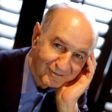The Folly of Market Timing
If you want to make money in the stock market, you have to be in—all the time.

Market timing for fun and profit! Now that sounds good, right? Who wouldn’t want to have fun while making a profit? In the investment world, that’s the siren song of the market timer. They ask the obvious question, “Why would you want to invest in the market when it’s going down?” Of course no one would.
As a consequence, there is an overwhelming temptation to follow the guru who promises to help you avoid bear markets by trying to ride market updrafts and avoid drops. That approach of beating the market is an overwhelming temptation for many investors.
A simple analysis of market history would show that if you called the market correctly every year you’d be rich. If you were correct in calling the market even half the time, your return wouldn’t be too bad, either. Given those odds, why wouldn’t you give market timing a shot?
From just $107.88 $24.99 for Kiplinger Personal Finance
Become a smarter, better informed investor. Subscribe from just $107.88 $24.99, plus get up to 4 Special Issues

Sign up for Kiplinger’s Free Newsletters
Profit and prosper with the best of expert advice on investing, taxes, retirement, personal finance and more - straight to your e-mail.
Profit and prosper with the best of expert advice - straight to your e-mail.
The problem is that, as in many cases, simple statistics can be very misleading—like the stories of the man who drowned in a lake with an average depth of 3 feet, or the man who thought he’d be comfortable with his head in an oven and his rear in the refrigerator.
Assuming returns based on the concept of flipping a coin can be very misleading. What matters is the actual annual sequence of returns. Remember, a market timer has to be right twice – when to get out AND when to get back in. Consider the following example:

The timer correctly called the bull markets in years 1 and 2 but missed the first bad market in year 3. He then redeemed himself by calling the serious bear markets in years 4 and 5, avoiding a 35% loss. Unfortunately, while waiting for confirmation that the market had turned, he missed the dramatic bull markets in years 6 and 7 (remember, you have to decide when to get back in as well as when to get out). The result: Patient investor, 4.6% annual return; Timer, 3.9%.
How likely is it that this will happen to a market timer? Over time, it’s just about guaranteed. Consider the grand recession. From November ‘07 to March ‘09, the market fell 46.7%. The subsequent one-year return was 53.6%!
Still not convinced? If I asked you to name the top 10 artists of all time or the top 10 baseball players or the top 10 presidents, we’d all have our own list and happily debate our choices. Now, let me ask you, name the top 10 market timers of all time? Having trouble? How about the top 5? Still stuck? How about the top 1? I’m sure you’re still having trouble.
My point is, if anyone had successfully timed the market over an extended period of time we would know his or her name as they would be one of the richest people in the world. The fact that we don’t know any names should be a warning sign not to chase the illusion of market timing.
Research has shown that when you factor in transaction costs you would have to be correct almost 70% of the time. And that assumes instantaneous switching from stock to cash and back. The real world doesn't work that way. If you factor in a time delay for switching to look for a market “confirmation,” you would have to be correct almost all of the time to beat the buy-and-manage alternative.
The moral? If you want to make money in the market, you have to be in the market – all of the time.
Harold Evensky, CFP is Chairman of Evensky & Katz, a fee-only wealth management firm and Professor of Practice at Texas Tech University. He holds degrees from Cornell University. Evensky served on the national IAFP Board, Chair of the TIAA-CREF Institute Advisor Board, Chair of the CFP Board of Governors and the International CFP Council. Evensky is author of The New Wealth Management and co-editor of The Investment Think Tank and Retirement Income Redesigned.
Profit and prosper with the best of Kiplinger's advice on investing, taxes, retirement, personal finance and much more. Delivered daily. Enter your email in the box and click Sign Me Up.

Harold Evensky, CFP® is Chairman of Evensky & Katz, a fee-only investment advisory firm and Professor of Practice in the Personal Financial Planning Department at Texas Tech University. Evensky served as Chair of the TIAA-CREF Institute Advisor Board, Chair of the CFP Board of Governors and the International CFP Council. He is on the advisory board of the Journal of Retirement Planning and is the Research Columnist for Journal of Financial Planning. Evensky is co-author of The New Wealth Management and co-editor of The Investment Think Tank and Retirement Income Redesigned. Mr. Evensky has received numerous awards over the years. The most recent is Investment Advisor Magazine, 2015 IA 35 for 35 recognizing the advisor advocates, investors, politicians and thought leaders have stood out over the past 35 years and will influence financial services for decades to come. Don Phillips of Morningstar called Mr. Evensky the dean of financial planning in America.
-
 Forget Financial Forecasts: Focus on These 3 Goals for Success
Forget Financial Forecasts: Focus on These 3 Goals for SuccessWe know the economy is unpredictable and markets will do what they do, no matter who predicts what. Here's how to focus on what you can control.
-
 Why In-Person Financial Guidance Remains the Gold Standard
Why In-Person Financial Guidance Remains the Gold StandardFace-to-face conversations between advisers and clients provide the human touch that encourages accountability and a real connection.
-
 How You Can Turn Your Home Equity Into a Retirement Buffer
How You Can Turn Your Home Equity Into a Retirement BufferIf you're one of the many homeowners who has the bulk of your net worth tied up in your home equity, you might consider using that equity as a planning tool.
-
 I'm a Wealth Planner: Forget 2026 Market Forecasts and Focus on These 3 Goals for Financial Success
I'm a Wealth Planner: Forget 2026 Market Forecasts and Focus on These 3 Goals for Financial SuccessWe know the economy is unpredictable and markets will do what they do, no matter who predicts what. Here's how to focus on what you can control.
-
 I'm a Financial Adviser: Why In-Person Financial Guidance Remains the Gold Standard
I'm a Financial Adviser: Why In-Person Financial Guidance Remains the Gold StandardFace-to-face conversations between advisers and clients provide the human touch that encourages accountability and a real connection.
-
 This Is How You Can Turn Your Home Equity Into a Retirement Buffer
This Is How You Can Turn Your Home Equity Into a Retirement BufferIf you're one of the many homeowners who has the bulk of your net worth tied up in your home equity, you might consider using that equity as a planning tool.
-
 Feeling Too Guilty to Spend in Retirement? You Really Need to Get Over That
Feeling Too Guilty to Spend in Retirement? You Really Need to Get Over ThatAre you living below your means in retirement because you fear not having enough to leave to your kids? Here's how to get over that.
-
 Strategies for Women to Maximize Social Security Benefits
Strategies for Women to Maximize Social Security BenefitsWomen often are paid less than men and live longer, so it's critical that they know their Social Security options to ensure they claim what they're entitled to.
-
 This Is How Early Retirement Losses Can Dump You Into Financial Quicksand (Plus, Tips to Stay on Solid Ground)
This Is How Early Retirement Losses Can Dump You Into Financial Quicksand (Plus, Tips to Stay on Solid Ground)Sequence of returns — experiencing losses early on — can quickly deplete your savings, highlighting the need for strategies that prioritize income stability.
-
 How an Elder Law Attorney Can Help Protect Your Aging Parents From Financial Mistakes
How an Elder Law Attorney Can Help Protect Your Aging Parents From Financial MistakesIf you are worried about older family members or friends whose financial judgment is raising red flags, help is out there — from an elder law attorney.
-
 Q4 2025 Post-Mortem From an Investment Adviser: A Year of Resilience as Gold Shines and the U.S. Dollar Dives
Q4 2025 Post-Mortem From an Investment Adviser: A Year of Resilience as Gold Shines and the U.S. Dollar DivesFinancial pro Prem Patel shares his take on how markets performed in the fourth quarter of 2025, with an eye toward what investors should keep in mind for 2026.